Health
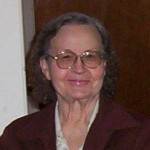 It’s hard to believe that my mother-in-law, Joann Schulenberg has been in Heaven for four years now. Her passing took time. Alzheimer’s Disease is a slow killer, in comparison to other diseases. That doesn’t make Alzheimer’s Disease any less devastating, and in fact, it just might be more devastating, because before the end comes, the patient has already lost their memory. Still, if you look for the good in the situation, you might just find that while they may not remember many new things, including who you are, now that you are grown up, they have many old memories that can really enrich your life…if you are willing to listen to their stories.
It’s hard to believe that my mother-in-law, Joann Schulenberg has been in Heaven for four years now. Her passing took time. Alzheimer’s Disease is a slow killer, in comparison to other diseases. That doesn’t make Alzheimer’s Disease any less devastating, and in fact, it just might be more devastating, because before the end comes, the patient has already lost their memory. Still, if you look for the good in the situation, you might just find that while they may not remember many new things, including who you are, now that you are grown up, they have many old memories that can really enrich your life…if you are willing to listen to their stories.
My mother-in-law often wasn’t sure of our names when we came to visit her, but by the look on her face and the alertness of her posture, you knew that she knew that you belonged to her. Many people place a lot of emphasis on the patient knowing their family’s names, but that is just setting yourself up for sadness. And you miss the recognition that comes without the name. My mother-in-law did so much for so many people…from knitting, to crocheting, to sewing, to cooking, my mother-in-law did a lot for the people around her. She lived a good long life, much of it raising the vegetables and meat for the family. She saw eras of time that people today can’t understand. With depression and recession, boom and bust, mining and agriculture, she had a diverse viewpoint, and that made her, unlike the rest of the people around her knowledgeable in different ways of life.
As her disease progressed, my mother-in-law, lost her recent memories, but she retained the old memories, and she passed them along to her family…often in the funniest ways. One minute you might find yourself telling her what time to get on the school bus, the next you think you have her all figured out when she tells you that they are having dinner at your house…like you aren’t you. When you try to play along, and ask her what the 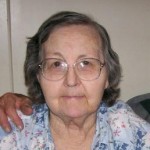 “imaginary you” will be cooking, suddenly she was back and making you feel ridiculous, by saying, “I don’t know, what are you cooking?” I know people consider Alzheimer’s Disease to be a tragic, devastating disease, and I suppose it is, but when people think about how devastating Alzheimer’s is, they are thinking of themselves…what they are missing out on, not thinking about the patient…who won’t remember grief or loss, who gets to become younger in their mind, and who ends up without a care in the world. Attitude is a big part of dealing with Alzheimer’s Disease, and I don’t mean the attitude of the patient, I mean the attitude of the family. It makes all the difference in the world. Four years ago, my mother-in-law left us for Heaven, where her mind is clear again. I am truly happy for her, even though we miss her very much.
“imaginary you” will be cooking, suddenly she was back and making you feel ridiculous, by saying, “I don’t know, what are you cooking?” I know people consider Alzheimer’s Disease to be a tragic, devastating disease, and I suppose it is, but when people think about how devastating Alzheimer’s is, they are thinking of themselves…what they are missing out on, not thinking about the patient…who won’t remember grief or loss, who gets to become younger in their mind, and who ends up without a care in the world. Attitude is a big part of dealing with Alzheimer’s Disease, and I don’t mean the attitude of the patient, I mean the attitude of the family. It makes all the difference in the world. Four years ago, my mother-in-law left us for Heaven, where her mind is clear again. I am truly happy for her, even though we miss her very much.

 Depending on who you talk to, you will hear a variety of thoughts on Christmas, from it being a pagan holiday to it being a Christian holiday, to Jesus being born in the spring…which is interesting to me, because my nephew, Barry Schulenberg celebrated his December 11th birthday on June 11 for a long time so that it wasn’t so close to Christmas…thereby spreading his gift receiving out over the year. Noe a bad idea. Really, my point is that the time of year really doesn’t matter. It is the fact that you are celebrating the birth of our Lord and Savior. I don’t think He cares, one way or the other, if we have the date wrong. Birthdays are often celebrated on a day other than the actual day…and Christmas has also been celebrated on a day other than the 25th of December, due to work schedules, illness, and distance.
Depending on who you talk to, you will hear a variety of thoughts on Christmas, from it being a pagan holiday to it being a Christian holiday, to Jesus being born in the spring…which is interesting to me, because my nephew, Barry Schulenberg celebrated his December 11th birthday on June 11 for a long time so that it wasn’t so close to Christmas…thereby spreading his gift receiving out over the year. Noe a bad idea. Really, my point is that the time of year really doesn’t matter. It is the fact that you are celebrating the birth of our Lord and Savior. I don’t think He cares, one way or the other, if we have the date wrong. Birthdays are often celebrated on a day other than the actual day…and Christmas has also been celebrated on a day other than the 25th of December, due to work schedules, illness, and distance.
The point is that Christmas…on whatever day it is celebrated…is the celebrate Jesus’ birth. Our Savior, the Son of God, the Word of the Trinity, took on flesh to become a human and gave up Heaven to come to Earth to die  for us, that we might live in Heaven with Him and that we can become the Righteousness of God, even here on Earth. That is the reason we celebrate Jesus, and the reason we always will. People can call Christmas whatever they want to, but those of us who serve the Lord will always know exactly why Christmas is important. They can never take that away from us.
for us, that we might live in Heaven with Him and that we can become the Righteousness of God, even here on Earth. That is the reason we celebrate Jesus, and the reason we always will. People can call Christmas whatever they want to, but those of us who serve the Lord will always know exactly why Christmas is important. They can never take that away from us.
Jesus was the greatest gift God ever gave to the world, and that is why we give gifts to this day It is to remember the greatest gift ever given, because of a love that is beyond anything we can possibly imagine. If you want to really understand the love of your Heavenly, remember how much your parents love you, and then multiply it by infinity. That is the love of God. The Bible says in John 3:16, “For God so loved the world, that He gave His only begotten Son, that whosoever believes in Him, should not perish, but have everlasting Life.” God is Love, and He gave His Son for us. Praise God, Happy birthday Jesus, and Merry Christmas to all of you.
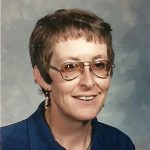
 It’s hard for me to believe that my husband, Bob Schulenberg’s aunt, Linda Cole has been gone now for 5 years. She always seemed to be so full of life, and then suddenly, she was gone. In many ways, Linda quit living…really living when her husband, Bobby Cole passed away May 30, 2014. Bobby was her soulmate, and when they married, it was “until death do they part” and so it was, when Bobby passed away. By that time, their kids had both married and moved away, so I’m sure there was a degree of loneliness too, but it was still a shock to all of us, because we had no idea that her death was so close. Heart attacks are that way though. One minute the victim is fine, and the next they aren’t.
It’s hard for me to believe that my husband, Bob Schulenberg’s aunt, Linda Cole has been gone now for 5 years. She always seemed to be so full of life, and then suddenly, she was gone. In many ways, Linda quit living…really living when her husband, Bobby Cole passed away May 30, 2014. Bobby was her soulmate, and when they married, it was “until death do they part” and so it was, when Bobby passed away. By that time, their kids had both married and moved away, so I’m sure there was a degree of loneliness too, but it was still a shock to all of us, because we had no idea that her death was so close. Heart attacks are that way though. One minute the victim is fine, and the next they aren’t.
Linda had lived a number of places in her lifetime, but in many ways, I think she liked Winnemucca, Nevada the best. It was small enough to be likeable, but with the gambling industry there was always something to do. Linda and Bobby both worked in a casino, and had an active social life. They had always loved dancing, especially square dancing, and while I don’t know if they had a place to dance in Winnemucca, they did when they were in Kennebec, South Dakota. They also love to pay cards, which might be why they enjoyed the casinos so much. They used to spend hours playing cards with any of the family who came to visit.
Prior to moving to Winnemucca, they had owned a hotel in Kennebec, but in a strange twist of fate, the building 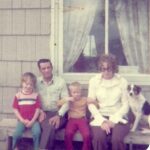
 was struck by lightning years ago, and actually burned to the ground. I had never known of a building that was destroyed by lightning, but it does happen. With their source of income gone, and Kennebec being the extremely small town it is, there was nothing to do, but to move away. So, they went to Winnemucca, Nevada. It was a huge life change, but one they were excited to make. They enjoyed life in Winnemucca, enjoyed being grandparents, and each other. They had a good life. Today would have been Linda’s 75th birthday. Happy birthday in Heaven, Linda. We love and miss you very much.
was struck by lightning years ago, and actually burned to the ground. I had never known of a building that was destroyed by lightning, but it does happen. With their source of income gone, and Kennebec being the extremely small town it is, there was nothing to do, but to move away. So, they went to Winnemucca, Nevada. It was a huge life change, but one they were excited to make. They enjoyed life in Winnemucca, enjoyed being grandparents, and each other. They had a good life. Today would have been Linda’s 75th birthday. Happy birthday in Heaven, Linda. We love and miss you very much.
 For a heart surgeon, there comes a point with a heart, when the diseased part is bad enough that it can’t be fixed. No matter how hard he tries, it is going to take a miracle to save the owner of that heart. That was the place that Dr Christiaan Neethling Barnard was facing in November 1967. His patient, 54-year-old Louis Washkansky was…well, dying, with little hope of survival. Heart transplants weren’t done every day like they are these days, and Barnard had told Mr and Mrs Washkansky that the operation had an 80% chance of success, an assessment which has been criticized as misleading, but by the same token, Mr Washkansky had no chance of survival without the transplant. Then, the opportunity presented itself, in the form of accident victim, Denise Darvall.
For a heart surgeon, there comes a point with a heart, when the diseased part is bad enough that it can’t be fixed. No matter how hard he tries, it is going to take a miracle to save the owner of that heart. That was the place that Dr Christiaan Neethling Barnard was facing in November 1967. His patient, 54-year-old Louis Washkansky was…well, dying, with little hope of survival. Heart transplants weren’t done every day like they are these days, and Barnard had told Mr and Mrs Washkansky that the operation had an 80% chance of success, an assessment which has been criticized as misleading, but by the same token, Mr Washkansky had no chance of survival without the transplant. Then, the opportunity presented itself, in the form of accident victim, Denise Darvall.
The time had come, and on December 3, 1967, Darvall’s heart was transplanted by Dr Bernard into Washkansky. As with any new procedure, there were the inevitable risks, and while Washkansky regained full consciousness and was able to talk easily with his wife, he developed pneumonia eighteen days later and because of his compromised immune system, due largely to the anti-rejection drugs, he died eighteen days later of pneumonia, largely brought on by the anti-rejection drugs that suppressed his immune system. Dr Bernard could have given up, but he did not. His second heart transplant patient, Philip Blaiberg received his new heart in 1968, and while his life after that was not long, he did live another year and a half. Of course, these days, the heart transplant patient has a much better prognosis because of how much medical procedures have improved.
Born in Beaufort West, Cape Province, South Africa, on November 8, 1922, Bernard studied medicine and practiced for several years in his native South Africa. As a young doctor, he experimented on dogs, which I suppose might make some people angry. Nevertheless, Barnard developed a remedy for the infant defect of intestinal atresia. Intestinal atresia refers to a part of the fetal bowel that is not developed, and the intestinal tract becomes partially or completely blocked (bowel obstruction). His technique saved the lives of ten babies in Cape Town and was adopted by surgeons in Britain and the United States.
In 1955, Bernard decided to travel to the United States to further his studies. He was initially assigned further 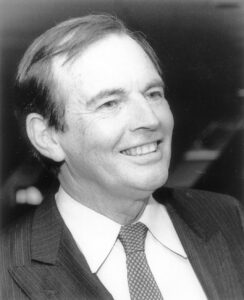 gastrointestinal work by Owen Harding Wangensteen at the University of Minnesota. Then, Bernard was introduced to the heart-lung machine, and was allowed to transfer to the service run by open heart surgery pioneer Walt Lillehei. After his study abroad, he returned to South Africa in 1958. Barnard was appointed head of the Department of Experimental Surgery at the Groote Schuur Hospital in Cape Town. After a long and successful career, Bernard retired as head of the Department of Cardiothoracic Surgery in Cape Town in 1983 after rheumatoid arthritis in his hands ended his surgical career. Still, he could not leave surgery completely alone. He became interested in anti-aging research, and in 1986 his reputation suffered when he promoted Glycel, an expensive “anti-aging” skin cream, whose approval was withdrawn by the United States Food and Drug Administration soon thereafter. During his remaining years, he established the Christiaan Barnard Foundation, which was dedicated to helping underprivileged children throughout the world. He died on September 2, 2001 at the age of 78 in Paphos, Cyprus after an asthma attack.
gastrointestinal work by Owen Harding Wangensteen at the University of Minnesota. Then, Bernard was introduced to the heart-lung machine, and was allowed to transfer to the service run by open heart surgery pioneer Walt Lillehei. After his study abroad, he returned to South Africa in 1958. Barnard was appointed head of the Department of Experimental Surgery at the Groote Schuur Hospital in Cape Town. After a long and successful career, Bernard retired as head of the Department of Cardiothoracic Surgery in Cape Town in 1983 after rheumatoid arthritis in his hands ended his surgical career. Still, he could not leave surgery completely alone. He became interested in anti-aging research, and in 1986 his reputation suffered when he promoted Glycel, an expensive “anti-aging” skin cream, whose approval was withdrawn by the United States Food and Drug Administration soon thereafter. During his remaining years, he established the Christiaan Barnard Foundation, which was dedicated to helping underprivileged children throughout the world. He died on September 2, 2001 at the age of 78 in Paphos, Cyprus after an asthma attack.
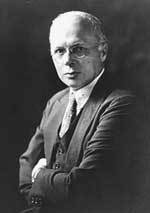 Modern medicine has come a long way through the advances of a number of people, one of the greatest being Richard Lewisohn. Born July 12, 1875, in Hamburg, Germany, Lewisohn studied medicine at the University of Freiburg, which is still one of the most prestigious medical schools in Europe. He obtained his medical degree in 1899, and in 1906, he immigrated to New York. Lewisohn’s initial interest was in the digestive system (gastroenterology). He began his work at Mount Sinai Hospital, but, it ended up being his work with blood transfusions that made him the medical hero he was.
Modern medicine has come a long way through the advances of a number of people, one of the greatest being Richard Lewisohn. Born July 12, 1875, in Hamburg, Germany, Lewisohn studied medicine at the University of Freiburg, which is still one of the most prestigious medical schools in Europe. He obtained his medical degree in 1899, and in 1906, he immigrated to New York. Lewisohn’s initial interest was in the digestive system (gastroenterology). He began his work at Mount Sinai Hospital, but, it ended up being his work with blood transfusions that made him the medical hero he was.
The blood is a complicated matter, and the study of the blood, or rather the experimentational use of the blood, often ended with tragic, and even fatal results. Of course, much of the problem came from having no understanding, or even any knowledge of blood types. The discovery of blood types didn’t come about until 1901, when Karl Landsteiner discovered that blood consisted of different types. Some types were compatible and could be transfused, leading to healing, but other types coagulated when mixed and would kill you. It was an amazing discovery, but Landsteiner’s discovery did not change medicine overnight. Doctors still faced the the fact that when blood was removed to transfuse into another person, it quickly clotted, making it unusable. That led to a direct method of transfusion, crazy in and of itself, in which doctors would sew the veins and arteries of the donor and the recipient together. Maybe it worked, but it just wasn’t practical. Not only did you have to have a donor with the correct type on hand, but the physician didn’t know how much blood was being pumped into the patient, or out  of the donor, for that matter. They needed a way to have blood on hand, and in measurable containers, all without having to deal with spoilage.
of the donor, for that matter. They needed a way to have blood on hand, and in measurable containers, all without having to deal with spoilage.
In April 1914, a Belgian physician named Albert Hustin, proved that sodium citrate could be used as an anticoagulant in diluted blood. Lewisohn immediately jumped upon this insight and set up detailed experiments using sodium citrate and dog blood. Through Lewisohn’s experiments transfusing dogs, he was able to determine the exact concentration of sodium citrate that was both safe and effective for blood transfusions. He was also able to keep the extracted blood viable for two days prior to transfusion. More study would eventually increase that timeframe up to 14 days.
This was exactly what the world needed…blood could be stored, and made available as needed. Lewisohn’s work led to the storage of blood in blood banks. It is a discovery that is credited with saving over 1 billion lives to date. Lewisohn’s discovery, occurring at the time of World War I, as well as his findings concerning blood storage for transfusions was used as a method to save the lives of wounded soldiers. Use of blood transfusions  expanded after the war. By the 1930s Blood Banks became common in cities worldwide, making blood transfusions the most important lifesaving medical advance in history.
expanded after the war. By the 1930s Blood Banks became common in cities worldwide, making blood transfusions the most important lifesaving medical advance in history.
In 1955 Lewisohn received the American Association of Blood Banks’ Karl Landsteiner Memorial Award. In January 1959 he became an honorary fellow of the Royal College of Surgeons of England, having been a fellow of the American College of Surgeons since 1916. Lewisohn was also a Fellow of the American Gastroenterological Association, and served on the American Board of Surgery. He passed away (probably of natural causes, but I cannot confirm that) on August 11, 1961 in New York City. He was 86 years old.
 In the mid-1800s, it was unheard of for a woman to be a doctor. They were barely allowed to be a nurse, although they were somehow expected to be able to do all the “nursing” duties for their own family. Elizabeth Blackwell was born February 3, 1821 and she was about to change things forever. She first became a physician in England, and then she became the first woman to receive a medical degree in the United States, and the first woman on the Medical Register of the General Medical Council. I’m not a big “women’s libber,” but sometimes women need to decide what they want to do in life, and go for it. Elizabeth Blackwell played an important role in both the United States and the United Kingdom as a social awareness and moral reformer. She promoted education for women in medicine.
In the mid-1800s, it was unheard of for a woman to be a doctor. They were barely allowed to be a nurse, although they were somehow expected to be able to do all the “nursing” duties for their own family. Elizabeth Blackwell was born February 3, 1821 and she was about to change things forever. She first became a physician in England, and then she became the first woman to receive a medical degree in the United States, and the first woman on the Medical Register of the General Medical Council. I’m not a big “women’s libber,” but sometimes women need to decide what they want to do in life, and go for it. Elizabeth Blackwell played an important role in both the United States and the United Kingdom as a social awareness and moral reformer. She promoted education for women in medicine.
Strangely, Blackwell was not interested in a career in medicine at first. In fact, when her schoolteacher brought in a bull’s eye to use as a teaching tool, Blackwell found that she didn’t feel so well. So, initially, she became a schoolteacher in order to support her family. Teaching school was one of the few “acceptable” occupations for women during the 1800s. Unfortunately for her, she hates every minute of teaching, but she found that medicine and medical subjects did interest her.
Her interest in medicine began after a friend fell ill and told her that, if a female doctor had cared for her, she  might not have suffered so much. Blackwell decided then and there that she would go to medical school. She began applying to medical schools and immediately found out that there was a prejudice against women students of medicine. In fact, there was no such thing, and the school and other students intended to keep it that way. That prejudice against her gender would persist throughout her career, but it did not stop her.
might not have suffered so much. Blackwell decided then and there that she would go to medical school. She began applying to medical schools and immediately found out that there was a prejudice against women students of medicine. In fact, there was no such thing, and the school and other students intended to keep it that way. That prejudice against her gender would persist throughout her career, but it did not stop her.
She was rejected from every medical school she applied to, except Geneva Medical College, currently known as State University of New York Upstate Medical University. Amazingly, her acceptance came after the male students voted for her acceptance. And so it was that in 1847, Elizabeth Blackwell became the first woman to attend medical school in the United States. Her inaugural thesis on typhoid fever was published in 1849 in the Buffalo Medical Journal, shortly after she graduated. It was the first medical article ever published that had been written by a woman female student from the United States. In what was considered a perspective that was deemed by the medical community as feminine, the thesis “portrayed a strong sense of empathy and sensitivity to human suffering, as well as strong advocacy for economic and social justice.”
In 1857, Elizabeth Blackwell founded the New York Infirmary for Women and Children with her sister Emily Blackwell, and began giving lectures to female audiences on the importance of educating girls. She also played a significant role during the American Civil War by organizing nurses. Her contributions remain celebrated with the Elizabeth Blackwell Medal, which is awarded annually to a woman who has made significant contribution to  the promotion of women in medicine. Blackwell remained active even into her later years. In 1895, she published her autobiography, Pioneer Work in Opening the Medical Profession to Women. It was not very successful, selling less than 500 copies. After this publication, Blackwell slowly relinquished her public reform presence, and spent more time traveling. She visited the United States in 1906 and took her first and last car ride.
the promotion of women in medicine. Blackwell remained active even into her later years. In 1895, she published her autobiography, Pioneer Work in Opening the Medical Profession to Women. It was not very successful, selling less than 500 copies. After this publication, Blackwell slowly relinquished her public reform presence, and spent more time traveling. She visited the United States in 1906 and took her first and last car ride.
While holidaying in Kilmun, Scotland in 1907, Blackwell fell down a flight of stairs, and was left almost completely mentally and physically disabled. On May 31, 1910, she died at her home in Hastings, Sussex, after suffering a stroke that paralyzed half her body. Her ashes were buried in the graveyard of Saint Munn’s Parish Church, Kilmun, and obituaries honoring her appeared in publications such as The Lancet and The British Medical Journal.


 This has been an interesting year for my nephew, Steve Moore. Steve enjoys doing things with his hands, and on March 5, 2021, he managed to get twisted up in the lathe. It happened to be the same day his father-in-law, LJ Cook was having back surgery, and the day his uncle, Ron Schulenberg was visiting, so thankfully there was someone there to help. things could have turned out much worse for Steve, but he got out of it just in time before it did more damage. Steve had to go through occupational therapy to repair the torn muscles. His hand will take a while to get back to where it was, but he has his hand and the use of it, and that is a huge blessing.
This has been an interesting year for my nephew, Steve Moore. Steve enjoys doing things with his hands, and on March 5, 2021, he managed to get twisted up in the lathe. It happened to be the same day his father-in-law, LJ Cook was having back surgery, and the day his uncle, Ron Schulenberg was visiting, so thankfully there was someone there to help. things could have turned out much worse for Steve, but he got out of it just in time before it did more damage. Steve had to go through occupational therapy to repair the torn muscles. His hand will take a while to get back to where it was, but he has his hand and the use of it, and that is a huge blessing.
Steve was still recovering, when his company held their “late” Christmas party (lots of late Christmas parties this past year). They had decided to go to a place in Cody (Steve lives in Powell, Wyoming) called Cody Firearms Experience. Apparently they couldn’t have picked a better place, because everyone thought this place was very cool. Cody Firearms Experience offers practice ranges for shooting any gun, and they would have had Steve at that point for sure, but you can throw axes/tomahawks!! They give lessons, if you need them. Steve and his wife, my niece, Machelle Moore went back a couple times and that’s all it took. Steve is hooked. Steve and Machelle love to go camping, and so tomahawk throwing has become a part of the camping experience. He has gotten really good by practicing at camp and in their back yard.
In a normal year, Steve can be found helping his father-in-law and anyone else who needs help, cutting firewood, or just about whatever else is needed, but right now, he can’t stand any vibration on his hand. He even has a hard time running the weed eater, but he does get that done in their yard. That said, he had to take the summer off from trying to help his father-in-law get firewood for the winter. LJ found a guy that brought him some wood for the winter. It was already cut and split, so that was nice. Steve plans to work hard this winter to get his had back in shape for next summer. He is hoping he will be confident enough next summer to run the chainsaw. The chainsaw takes strength and hand control, so time will tell.
In the meantime, Steve has picked up the new hobby of throwing knives and tomahawks. His boys, Weston and Easton Moore love it too. It has been something that is a lot of fun for Steve and the boys to “bond” over. Then his work supervisor had a buddy that supplied them with some wood to throw in. They made some really nice targets. Since Weston lives in Butte, Montana now, Easton has had more time throwing, because he still lives at home. Steve even got the neighbor into throwing tomahawks. Then the neighbor brought over old kitchen knives to try. That didn’t work too well. They all ended up breaking. I guess kitchen knives weren’t designed for throwing at a wooden target. Steve ordered the good knives, and now they have knives to throw that don’t break. They are made of muck heavier metal. The tomahawks they used are hand forged, hand made out of Ohio…which prompted me to suggest that Steve needs a forge of his own. Machelle likes the idea, so I expect to see that going on in the future.
Steve and his family have been hiking in the Big Horn Mountains for twenty years, and going part way up one hill most of that time. They just love the area. This summer they hiked up higher up the hill than they had ever gone before and came across a replica (similar anyway) to the famous “Medicine Wheel” that is up there. They really like the are, because of the dark red dirt. They were hiking a different route, and ended up going to the top on the back side. As they were headed back to the truck, they found this wheel. When they got out the 

 compass, they found that, sure enough, the lines are exact north, south, east and west. They felt like they had found a real gem. Steve and Machelle love being out in the mountains, so I wouldn’t be surprised if they find the other wheels they have heard are out there. Today is Steve’s birthday. Happy birthday Steve!! Have a great day!! We love you!!
compass, they found that, sure enough, the lines are exact north, south, east and west. They felt like they had found a real gem. Steve and Machelle love being out in the mountains, so I wouldn’t be surprised if they find the other wheels they have heard are out there. Today is Steve’s birthday. Happy birthday Steve!! Have a great day!! We love you!!

 Recently, I ran across an article about drug use in among the Nazi regime. The article really caught my attention, because in many ways drug use among the Nazis made sense. The things they did to people would have been much easier if they were under the influence of drugs…mostly because they would be less likely to remember what they had done, and if they remembered, they would be less likely to care about what they had done. Drugs tend to dull the senses, and in many cases that makes the person relaxed and calm, but there are some drugs that make the person violent too. The article started out saying, “‘You can learn a lot about a culture from its drug use.’ Robert McAlmon, an American author living in Berlin during the tumultuous Weimar years, marveled that ‘dope, mostly cocaine, was to be had in profusion’ at ‘dreary night clubs’ where ‘poverty-stricken boys and girls of good German families sold it, and took it.’”
Recently, I ran across an article about drug use in among the Nazi regime. The article really caught my attention, because in many ways drug use among the Nazis made sense. The things they did to people would have been much easier if they were under the influence of drugs…mostly because they would be less likely to remember what they had done, and if they remembered, they would be less likely to care about what they had done. Drugs tend to dull the senses, and in many cases that makes the person relaxed and calm, but there are some drugs that make the person violent too. The article started out saying, “‘You can learn a lot about a culture from its drug use.’ Robert McAlmon, an American author living in Berlin during the tumultuous Weimar years, marveled that ‘dope, mostly cocaine, was to be had in profusion’ at ‘dreary night clubs’ where ‘poverty-stricken boys and girls of good German families sold it, and took it.’”
Over the years, a number of drugs have been banned, due to the danger of their use, the reactions of those taking them, or just that they are now deemed illegal. Cocaine was banned in 1924, but that has not really stopped it’s use. Like most drugs, if there is a “market” for it, someone will find a way to get the drug to the “customer.” Meth has become so easy to make and uses common (but poisonous) ingredients, so it has become the drug of choice for many drug addicts today. Some prescription drugs are addictive, and have become a part of the drug trafficking world too. Drugs like Opioids and Morphine are fairly easy to obtain from a doctor, because they hare used for many injuries and common ailments. Then they become addicted, and when they can no longer get a prescription for those drugs, they move on to illegal drugs.
Strangely, when the Nazis rose to power, illegal drug consumption actually fell. The Nazis regarded drugs as “toxic” to the German body. Drug users were given prison sentences, and addicts were classed…along with Jews, gypsies and homosexuals…as undesirable social elements. By the end of the 1930s, the Nazi pharmaceutical companies had turned away from opioids and cocaine, and moved towards synthetic stimulants. These could be produced entirely within Germany, per Nazi directive, of course. More money in the pocket of Hitler’s regime. “The transition from cabaret cocaine to over-the-counter meth helped fuel what German journalist Norman Ohler in his new book Blitzed: Drugs in the Third Reich calls the ‘developing performance society’ of the early Nazi era, and primed Germany for the war to come.”
I’m sure that the Third Reich, while calling it “developing performance society,” knew that the the use of these drugs was going to make the people taking the drugs more compliant to the government. Once a person is addicted to a drug, many will do anything to get a “fix,” including theft, robbery, breaking and entering, selling themselves, and even begging to get more. In 1937, the German pharmaceutical company called Temmler-Werke introduced Pervitin, which was a methamphetamine-based stimulant. The formula was developed by Dr Fritz Hauschild. He went on to pioneer East Germany’s sports doping program. Within a few months, this variant of crystal meth was available without a prescription, and was even sold in boxed chocolates. It was also widely adopted by people from all walks of life to elevate mood, control weight gain, and increase productivity. Pervitin’s success as an over-the-counter “wonder drug” caused a rebound in the country’s economic status after the war. The country came out of an economic depression to nearly full employment. Marketing for Pervitin claimed it would help “integrate shirkers, malingerers, defeatists, and whiners” into the rapidly expanding workforce. Students took it to cram for exams, while housewives took it to stave off depression. Pervitin use was so common that it became a normal part of life in the early Third Reich. For the military personnel of Hitler’s army, the chemical was a great weapon to fight the so-called “war on exhaustion.” The troops started relying on the “tank chocolate” to keep them alert for days on end. Before long, Nazi medical 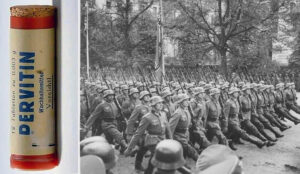 officials became increasingly aware of Pervitin’s risk factor. The tests performed on soldiers found that critical thinking skills declined the longer they stayed awake, even if the short-term gains were appealing enough. Even after drug sales to the general public were restricted in April 1940, the German Army High Command issued the so-called “stimulant decree,” ordering Temmler to produce 35 million tablets for military use. Of course, we know now that methamphetamine use is not only dangerous, but often deadly. The addictive effects alone can ruin lives. I don’t suppose Hitler cared much about that, as long as his troops obeyed his commands. I wonder how many men lost their lives because of the drug.
officials became increasingly aware of Pervitin’s risk factor. The tests performed on soldiers found that critical thinking skills declined the longer they stayed awake, even if the short-term gains were appealing enough. Even after drug sales to the general public were restricted in April 1940, the German Army High Command issued the so-called “stimulant decree,” ordering Temmler to produce 35 million tablets for military use. Of course, we know now that methamphetamine use is not only dangerous, but often deadly. The addictive effects alone can ruin lives. I don’t suppose Hitler cared much about that, as long as his troops obeyed his commands. I wonder how many men lost their lives because of the drug.

 Life isn’t always easy, and it doesn’t always go the way we thought it would go. Even spending many good years together, doesn’t guaranty that we will have many more. For Pearl Hein, who loved her husband Eddie Hein so much, the end came far too soon, but in a loving marriage, the end always comes too soon. No matter how many years you have been together. Then, it is up to the one left behind, to go forward, because their spouse would want them to continue living. Such was the case with Eddie. He wanted Pearl to live on.
Life isn’t always easy, and it doesn’t always go the way we thought it would go. Even spending many good years together, doesn’t guaranty that we will have many more. For Pearl Hein, who loved her husband Eddie Hein so much, the end came far too soon, but in a loving marriage, the end always comes too soon. No matter how many years you have been together. Then, it is up to the one left behind, to go forward, because their spouse would want them to continue living. Such was the case with Eddie. He wanted Pearl to live on.
Since Eddie’s passing, Pearl has done a little traveling. With her daughter, Kim Arani and her husband, Michael living in Texas, Pearl has become a bit of a traveler…maybe not a world traveler, but a traveler nevertheless. I have been very happy that Pearl is spending time with Kim and Michael in Texas and their place in Florida. She really needed the time away from the cold weather in Forsyth, Montana where she lives, and after losing her son, Kim’s brother, Larry Hein too…just three months after his dad, things have been very sad for Pearl over the past
I know she had a lovely time visiting Kim and Michael, and I am so happy for them all. They needed The time together so they could begin to heal. One of the best ways to heal after a loss is to take the time to share the memories of the past. I’m sure Kim and Pearl did a lot of reminiscing during Pearl’s visit, and I’m sure it was a great healing process. I know that Eddie and Larry would both be very glad Pearl went to Texas. I know it was hard for her to move on alone, but it is what they would want her to do.
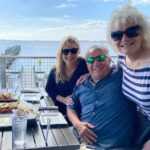
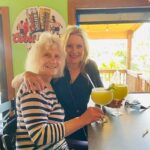
I remember watching the newer version of “Titanic” and when Rose survives the sinking, she goes on to live a full life, because Jack told her to live on. Life after loss is never easy, but it can be rewarding. People are meant to survive and to thrive. We are wired to grieve and to move forward with our lives. That doesn’t mean that it is an easy thing to do, but it is a necessary thing to do. I’m glad to see that Pearl is making that transition. Today is Aunt Pearl’s birthday. Happy birthday Pearl!! Have a great day!! We love you!!

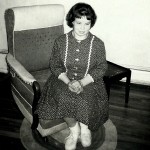 My sister-in-law, Marlyce Schulenberg lives only in our memories since her passing at the young age of 39, on August 13, 1989. Those were sad days leading up to and following her passing. The cancer stole so much from her. She was skin and bone by the time she died. Marlyce was developmentally disabled, and in most was she was an adult-kid. She loved candy. It was a vice she really had to have, and if that was the worst bad habit she had…well, that’s not bad. In the end, I suppose it was the extra weight she carried from the candy, that kept her alive as long as she hung on. Non-Hodgkin’s Lymphoma is a horrible disease. In Non-Hodgkin’s Lymphoma, white blood cells called lymphocytes grow abnormally and can form growths (tumors) throughout the body.in Marlyce, they tumor was in her esophagus, and she couldn’t swallow much. She ate baby food in the end.
My sister-in-law, Marlyce Schulenberg lives only in our memories since her passing at the young age of 39, on August 13, 1989. Those were sad days leading up to and following her passing. The cancer stole so much from her. She was skin and bone by the time she died. Marlyce was developmentally disabled, and in most was she was an adult-kid. She loved candy. It was a vice she really had to have, and if that was the worst bad habit she had…well, that’s not bad. In the end, I suppose it was the extra weight she carried from the candy, that kept her alive as long as she hung on. Non-Hodgkin’s Lymphoma is a horrible disease. In Non-Hodgkin’s Lymphoma, white blood cells called lymphocytes grow abnormally and can form growths (tumors) throughout the body.in Marlyce, they tumor was in her esophagus, and she couldn’t swallow much. She ate baby food in the end.
It was so sad, but I want to concentrate on the good memories. Marlyce worked at Wood’s School, which was for the handicapped at that time. They ran a laundry service there, and she worked in that laundry. She was so proud of her job. Marlyce was very dedicated to her job, and would go on sick, if need be. She was very proud of making money.
Marlyce was also a great baker of Chocolate Chip Cookies, and I loved them. They were the best I ever had…now or then. When we went out to the house to visit, I always hoped Marlyce had been baking. She made 
 other kinds of cookies too, but when I came in the door, I was always happiest when she said, “Caryn. I made Chocolate Chip Cookies!!”
other kinds of cookies too, but when I came in the door, I was always happiest when she said, “Caryn. I made Chocolate Chip Cookies!!”
Marlyce also made knitted stocking caps. She sold them at craft fairs, and they sold very well. These were talents that not every developmentally disabled person could do, but Marlyce excelled in those areas. I love the sweet memories of my sweet, gone-too-soon sister-in-law. Today would have been Marlyce’s 71st birthday. Happy birthday in Heaven, Marlyce. We love and miss you very much.

